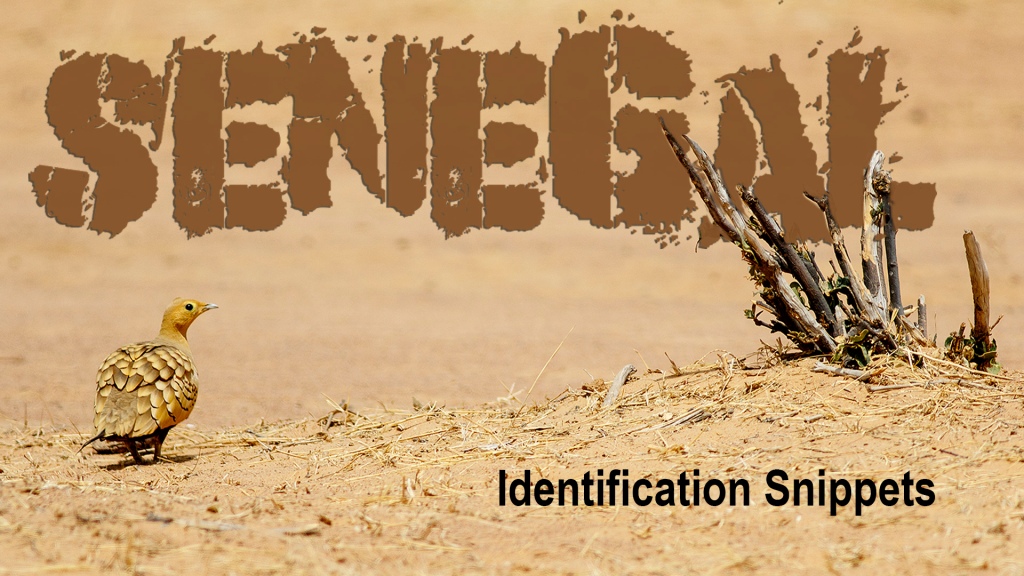
Senegal is an amazing place holding a nice mix of wintering Palearctic migrants and some stunning West African species.
Some birds that proved interesting from an ID point of view were some falcons, vultures, chiffchaffs and swifts. Here are a few notes on.
Mottled Swift
This was a species I had hoped to see on a previous South African trip in August but I wasn’t in the right area. I had noted that this widespread species occurred in Senegal too, but was quite a rare migrant. It had been see in the south east of Senegal at a well know birding spot of Wassadou. So, it was sort of expected unexpected surprise when on a morning boat trip, a bigger, chunkier apus type swift flew upriver, “MOTTLED SWIFT!”
Similar in overall color to the African Palm Swifts being greyer and bigger with a contrasting pale belly. Clearly not a Common/Pallid type, but certainly not a “hulking, large and powerful Alpine-like swift” as described in the literature. This caused some deliberation and head-scratching since while clearly a large Apus-like swift , with a pale, mottled belly, it was smaller than hinted at in the literature.
Discussion with Nik Borrow, revealed that the West Africa races furensis and loweii can be pale and contrasting (unlike some of the other eastern races) with loweii being smaller. This explained the discrepancy in what appeared to be obvious Mottled Swifts, yet appeared too small for that species based on the description in the literature.
At least two birds were noted flying up and down the river, with a total of four birds seen, apparently the highest recorded number ever in Senegal (Bram Piots pers.comm).
Photo: montage of Mottled Swifts and Pallid Swifts – note larger size and greyish body colour, pale belly with dark mottling, blackish underwing coverts and darker head sides in the Mottleds. (Julian Hough).
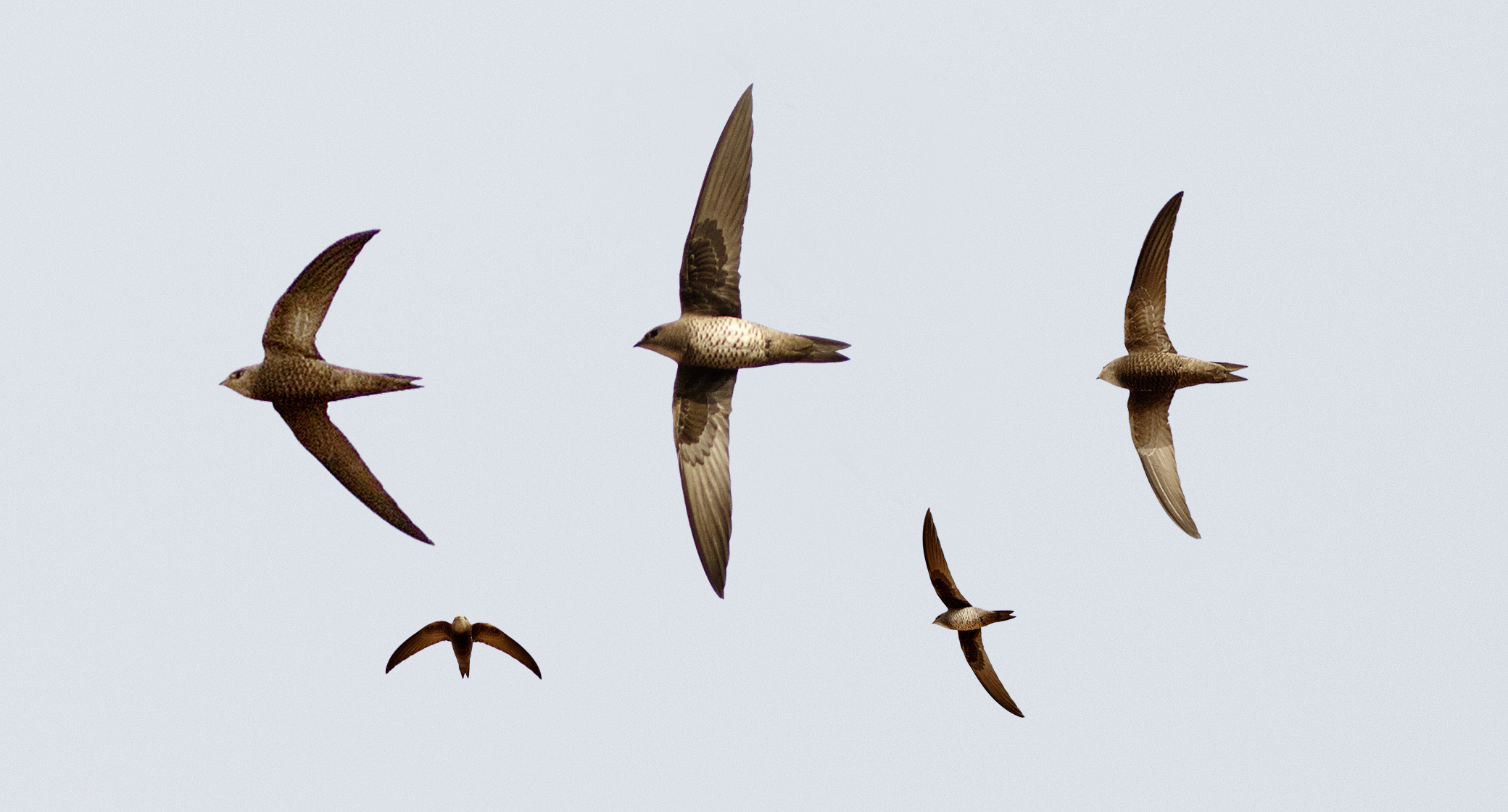
Iberian/Common Chiffchaff
While distracted by way better birds, a somewhat bright Iberian-type candidate was seen in the shaded tree areas at Richard Toll at a Long-tailed Nightjar roost. It appeared long-winged, quite yellow below and greenish above with a define fore-supercilium and dull grey-streaks at the carpal area. We had seen several ‘chiffchaff’ sp, hoping most would prove to be one species or the other. All the birds we saw briefly appeared the same in the field, but none were calling and conventional wisdom, and comments from experienced birders suggested non-calling birds were unidentifiable in the field which was somewhat of a disappointment given the treatise given to the field identification of this species in southern Europe.
photo: Nick Bonomo
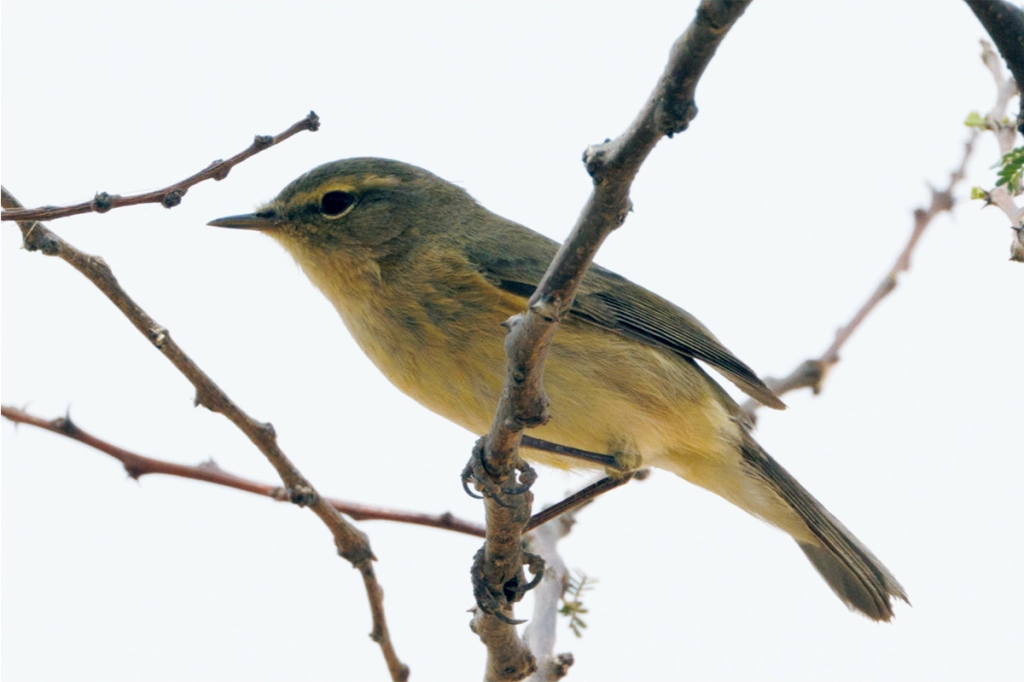
Lanner Falcon
At the same site as the Iberian/Common Chiffchaff, I had a high-circling falcon that I identified as a first-year Lanner Falcon. I was unsure of what field marks I was keying into, and some research and examination of images revealed the following pertinent field marks from first-year Peregrine.
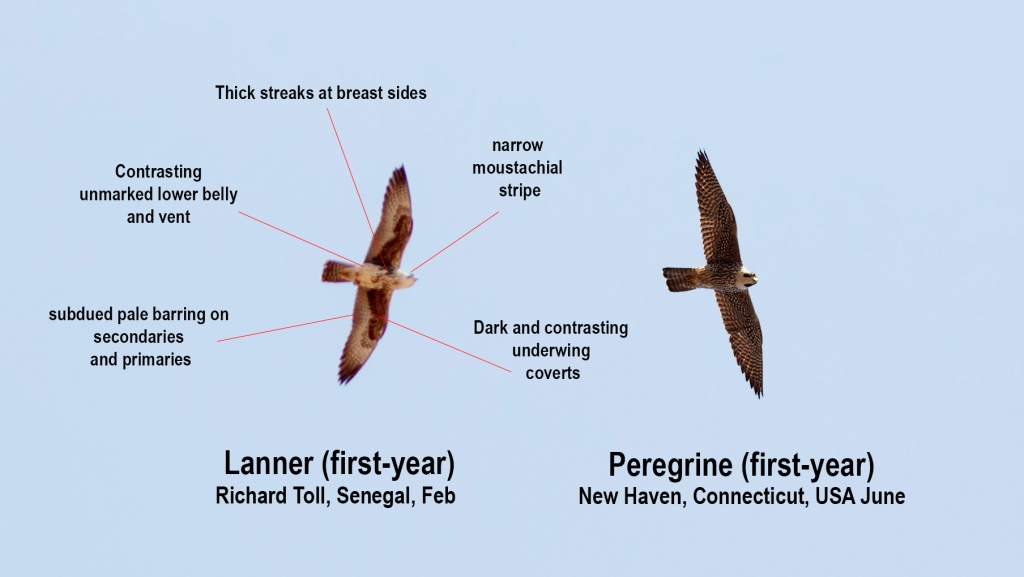
Beaudouin’s Snake-Eagle
In Senegal, snake-eagles can provide ID issues, mainly because visitors often don’t have a benchmark for ID purposes until several individuals have been seen and stuff can be worked out. Beaudouin’s is essentially another Short-toed Snake-eagle distinguished by a more contrasting darker, blacker hood and paler, more unmarked underwing coverts. Here are a couple of shots showing the differences.
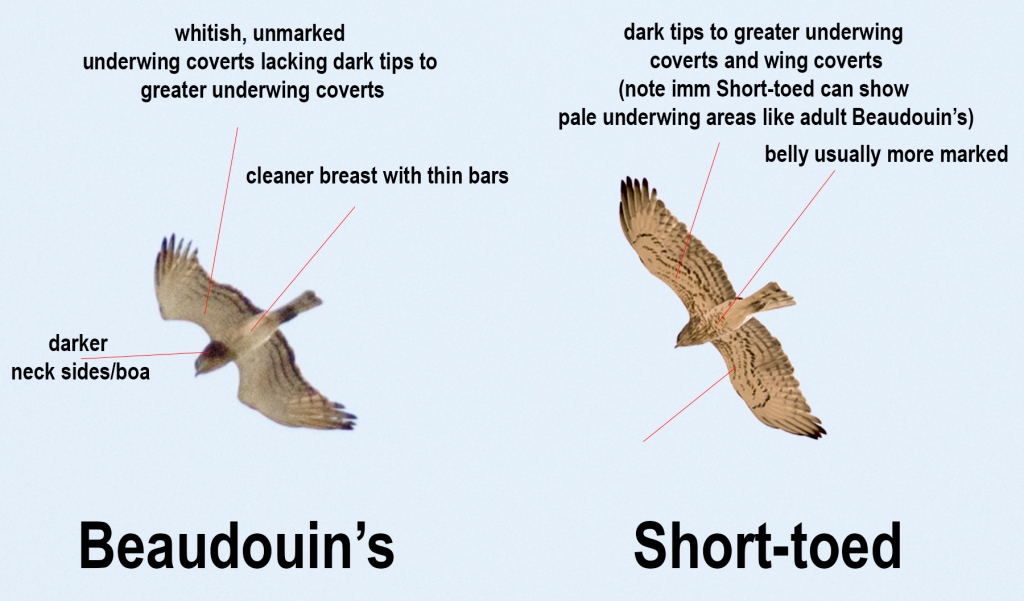
Tags: Beaudouin's, Iberina Chiffchaff, Lanner Falcon, Mottled Swift, Senegal, Short-toed
April 21, 2024 at 4:28 pm |
This is great stuff